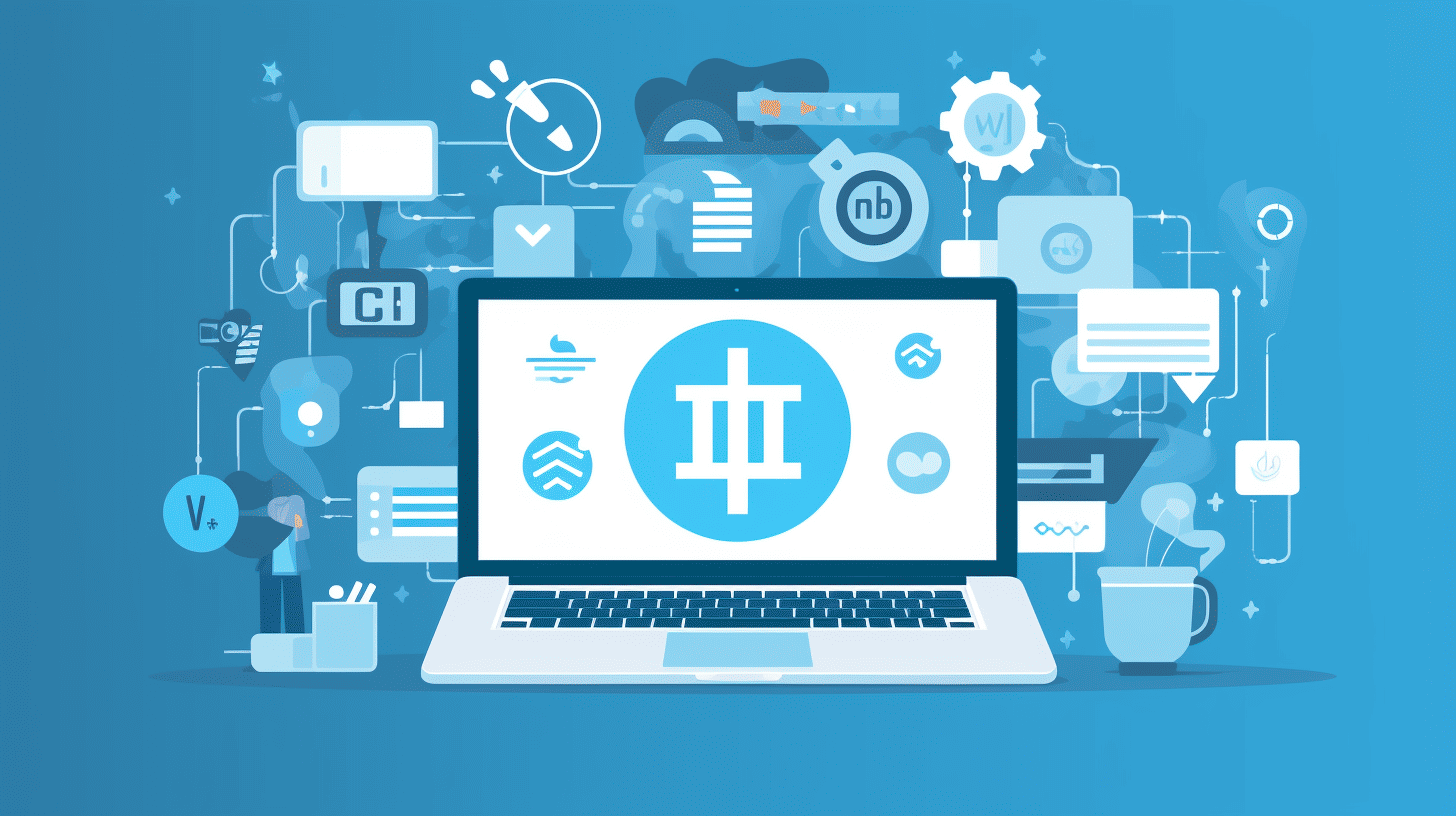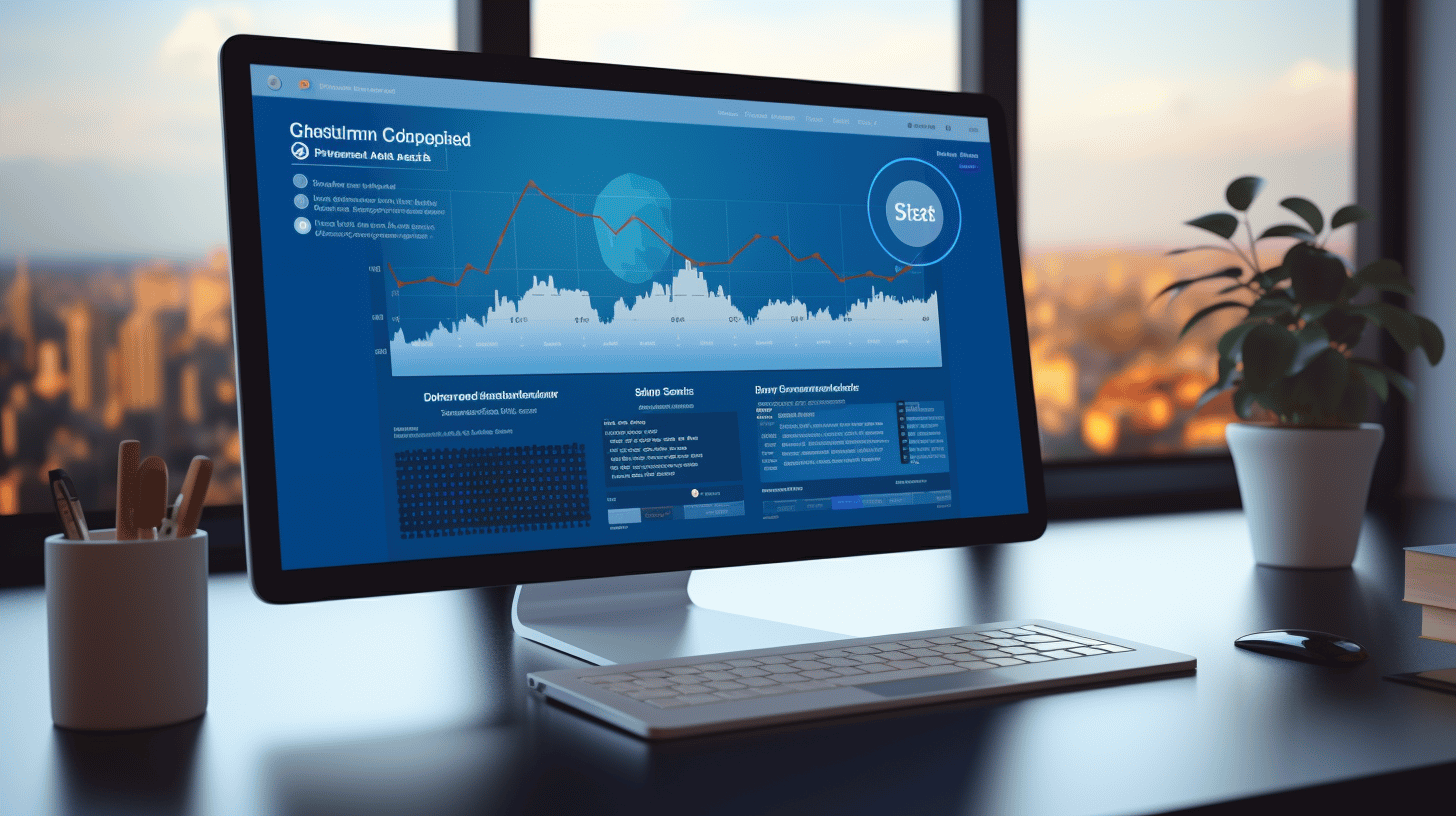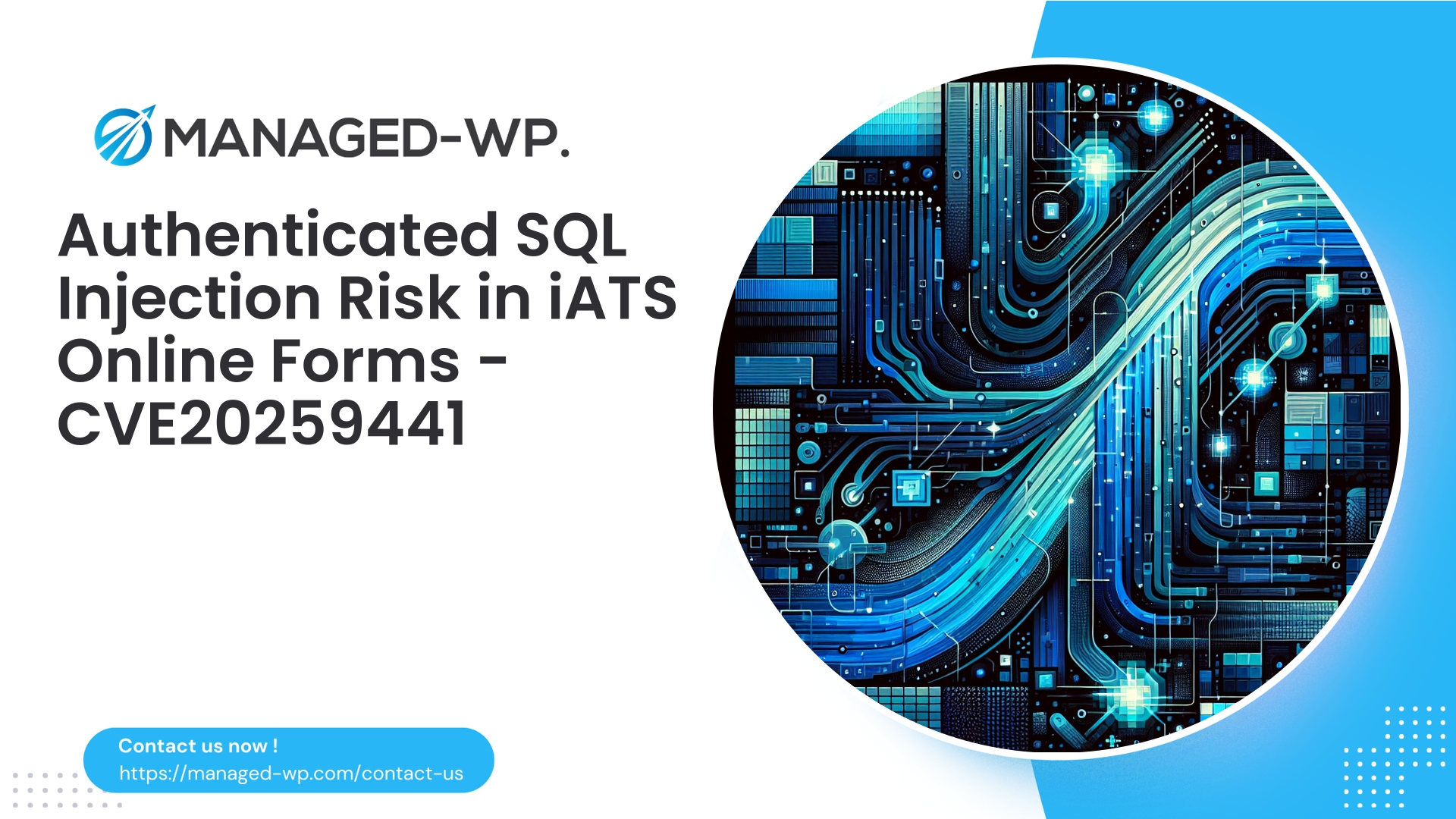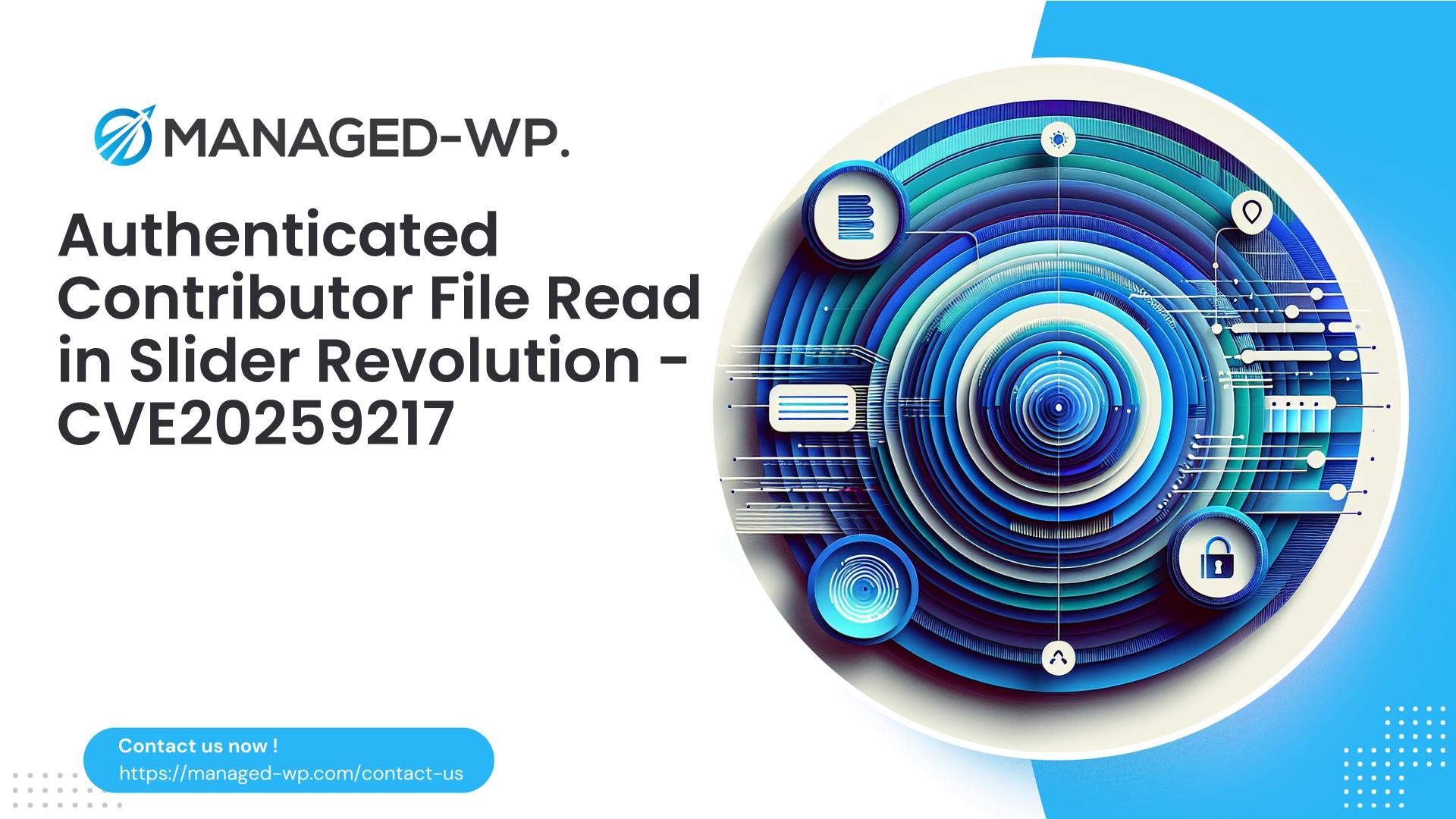| Plugin Name | Related Posts Lite |
|---|---|
| Type of Vulnerability | CSRF |
| CVE Number | CVE-2025-9618 |
| Urgency | Low |
| CVE Publish Date | 2025-08-29 |
| Source URL | CVE-2025-9618 |
Urgent Advisory: CVE-2025-9618 — Cross-Site Request Forgery in Related Posts Lite (≤ 1.12) — Critical Actions Every WordPress Admin Must Take
Author: Managed-WP Security Team
Date: 2025-08-30
Executive Summary
On August 29, 2025, a Cross-Site Request Forgery (CSRF) vulnerability was publicly disclosed in the popular WordPress plugin Related Posts Lite, affecting versions 1.12 and earlier, and tracked as CVE-2025-9618. While this flaw is rated as Low severity with a CVSS score of 4.3, it still presents a genuine risk to WordPress sites with privileged users who could be manipulated into executing unintended actions without adequate request validation.
This briefing is issued by Managed-WP, your trusted WordPress security partner in the United States. We detail the risk, explain CSRF in plain terms, discuss potential impacts, and provide tactical and strategic guidance on mitigation and detection. We also explain how a managed Web Application Firewall (WAF) can protect your site before an official plugin patch becomes available.
IMPORTANT: If your WordPress site uses Related Posts Lite version 1.12 or earlier, immediate attention is required. Follow the recommendations herein to safeguard your site.
Understanding CSRF: A Security Primer
Cross-Site Request Forgery (CSRF) is an attack vector where threat actors trick authenticated users — typically site admins — into sending unauthorized HTTP requests unknowingly. These requests exploit the user’s active session credentials (cookies, authentication tokens), making the server believe the request is legitimate.
WordPress developers are instructed to prevent CSRF by:
- Implementing WordPress nonces to validate request origins.
- Verifying users’ permissions through functions like
current_user_can(). - Rejecting state-changing requests that do not pass these security checks.
A failure to properly confirm the authenticity and authorization of requests results in exploitable CSRF vulnerabilities.
Details of the Related Posts Lite Vulnerability
- Plugin: Related Posts Lite
- Affected Versions: 1.12 and earlier
- Vulnerability Type: Cross-Site Request Forgery (CSRF)
- CVE Reference: CVE-2025-9618
- Disclosure Date: August 29, 2025
- CVSS Score: 4.3 (Low)
- Patch Status: No official fix available as of disclosure
The vulnerability stems from missing or insufficient nonce and capability verifications on plugin endpoints that handle HTTP requests performing changes. Attackers can exploit these endpoints by coercing logged-in administrators or editors to unknowingly trigger unintended actions.
Who Should Be Concerned?
- Sites running Related Posts Lite plugin versions 1.12 or earlier.
- Environments where privileged users (admins, editors) access WordPress dashboard regularly.
- Teams with multiple administrative accounts or shared logins browsing the internet while authenticated.
Note: Attackers do not need direct login credentials — they rely on social engineering to lure an authenticated user to a malicious site or crafted payload.
Potential Consequences of Exploitation
Although rated as low severity, the CSRF flaw can cause the following impacts:
- Unauthorized alteration of plugin settings controlling related posts display behavior.
- Triggering plugin functions that modify content, posts, or options, with unpredictable side effects.
- Enabling attackers to pivot into more dangerous operations via chained exploits.
- Generating log noise or confusion that masks further intrusion attempts.
While data theft is unlikely directly from CSRF, manipulation of administrative features increases risk of persistent compromise or privilege escalation.
Why “Low” Severity Does Not Mean Low Risk
The CVSS score of 4.3 reflects technical limitations:
- Attack requires an authenticated privileged user to interact with malicious content.
- Unprotected actions appear limited in scope.
That said, large numbers of WordPress sites with default roles and behavior create an attractive attack surface. Automated attacks can scale to thousands of targets counting on any one admin to fall victim.
Attack Scenario (Simplified)
- Attacker identifies vulnerable Related Posts Lite endpoint that accepts state-changing requests.
- Crafts malicious HTML payload (form, script) that triggers the endpoint with forged parameters.
- Logged-in admin visits attacker-controlled page unknowingly.
- The victim’s browser submits the crafted request automatically due to active session cookies.
- The vulnerable plugin executes the request without verifying nonces or capabilities.
Note: We do not provide exploit code. This information is for defense and awareness.
Detecting Signs of Exploitation
Indicators your site may have been targeted include:
- Unexpected changes in Related Posts plugin settings or site behavior.
- Unauthorized post or option modifications.
- Admin activity logged at unusual times or with suspicious origins.
- Server logs showing POST/GET requests to plugin admin endpoints from third-party referrers.
- Unexpected redirects or network calls initiated post-admin actions.
Recommended detection steps:
- Review server and WordPress logs for anomalous admin-ajax.php or plugin AJAX calls.
- Use malware scanning and forensic tools to detect file or database anomalies.
- Monitor user activity and IP address history via security audit plugins.
- Check for suspicious scheduled tasks, new users, or role escalations.
Immediate Risk Mitigation Measures
If your site uses Related Posts Lite ≤ 1.12, immediately implement these measures:
-
Assess necessity of the plugin:
- If non-essential, deactivate and uninstall promptly.
- If essential, proceed with containment steps below.
-
Restrict administrative environment:
- Instruct admins and editors to log out when not actively managing the site.
- Enforce two-factor authentication (2FA) on all admin accounts.
-
Limit backend access:
- Apply IP allowlisting on /wp-admin/ and /wp-login.php where feasible.
- Consider HTTP Basic Authentication in front of wp-admin (ensure compatibility).
-
Implement WAF protections:
- Block illegal POST requests lacking nonce parameters or originating from external referers.
- Leverage Managed-WP’s WAF services for fast virtual patch deployment.
-
Minimize admin privileges:
- Audit and remove unnecessary administrator-level accounts.
-
Monitor and backup:
- Perform a full site backup before changes.
- Increase logging and monitoring of admin actions and traffic.
- Maintain snapshots to enable immediate rollback if needed.
-
Educate your team:
- Alert all privileged users not to click suspicious links or visit unknown sites while logged in.
Best Practices for Developers & Plugin Vendors
Plugin maintainers should urgently:
- Implement strict nonce validation using
wp_verify_nonce()on all state-changing requests. - Enforce robust capability checks with
current_user_can()matching required permissions. - Limit exposure of sensitive AJAX or REST endpoints to authenticated and authorized users only.
- Use POST methods exclusively for state modifications, never GET.
- Incorporate CSRF protection for any REST API routes.
- Include unit and integration tests verifying requests without valid nonces or permissions are blocked.
Example secure code snippet for admin form processing:
// Verify nonce before processing form data
if ( ! isset( $_POST['my_plugin_nonce'] ) || ! wp_verify_nonce( $_POST['my_plugin_nonce'], 'my_plugin_action' ) ) {
wp_die( 'Nonce verification failed', 'Forbidden', array( 'response' => 403 ) );
}
// Confirm user capability
if ( ! current_user_can( 'manage_options' ) ) {
wp_die( 'Insufficient permissions', 'Forbidden', array( 'response' => 403 ) );
}
// Safe to proceed
$option_value = sanitize_text_field( $_POST['option_field'] );
update_option( 'my_plugin_option', $option_value );
How Managed-WP’s WAF Protects You
Our managed Web Application Firewall offers rapid virtual patching, blocking exploit attempts even before official plugin updates are available. Key features defending against CVE-2025-9618 include:
- Blocking forged POST requests missing the required nonces for plugin endpoints.
- Detecting and rejecting requests with external referers that indicate CSRF attempts.
- Rate-limiting automated exploitation attempts at scale.
- Applying emergency rules across all Managed-WP customers quickly and continuously tuning for accuracy.
Sample conceptual WAF logic:
- If a POST request targets
/wp-admin/admin-post.phpor related plugin endpoints, and: - The expected nonce parameter is missing or invalid, or
- The HTTP Referer header is from an external domain, or
- The user-agent appears malicious or associated with automation tools,
- Then block or challenge the request with HTTP 403 or CAPTCHA.
We carefully design rules to avoid blocking legitimate workflows, providing exceptions where trusted integration traffic is verified.
Action Checklist for WordPress Site Owners
-
Identify plugin and version:
- Verify Related Posts Lite version via WordPress Admin Dashboard > Plugins.
- If version ≤ 1.12, proceed immediately.
-
Deactivate if non-essential:
- Remove the plugin completely if it’s not critical to your site.
-
If needed, contain risk:
- Restrict admin backend by IP or HTTP Basic Auth.
- Enable two-factor authentication for all privileged users.
- Instruct admins to log out when idle and avoid browsing unknown sites while logged in.
- Engage Managed-WP’s free or paid WAF plans to add CSRF virtual patches.
- Create a backup of your site before applying changes.
-
Monitor activity:
- Watch logs for suspicious POST requests or abnormal admin actions.
-
Update when available:
- Apply official plugin patches as soon as the vendor releases a fixed version.
-
Post-incident steps:
- Run malware scans and file integrity checks.
- Change passwords and rotate API keys if you suspect compromise.
- Consider professional incident response if serious signs appear.
Reducing False Positives in Detection
We acknowledge false positives may disrupt legitimate workflows. To mitigate this:
- Whitelist known trusted endpoints and IP addresses.
- Only block external requests missing nonces that originate outside your domain.
- Deploy detection in monitoring mode before enforcing blocks.
- Coordinate with your developers to add explicit nonce handling to ease WAF rule specificity.
If You Suspect Exploitation
- Immediately revoke administrator session tokens and passwords.
- Rotate all API keys or secrets stored on your site.
- Restore site from clean backups if core files or database integrity is compromised.
- Scan for backdoors, webshells, and suspicious scheduled tasks.
- Contact your hosting provider for server-level security assessments if needed.
- Engage professional incident response specialists as warranted.
Frequently Asked Questions
Q: Should I panic if I have this plugin installed?
No. Panic is counterproductive. However, immediate action is necessary. Follow this advisory closely to reduce risk and prepare for updates.
Q: Will updating WordPress core resolve this?
No. This issue resides within the Related Posts Lite plugin. Updating WordPress core is good practice, but plugin updates or mitigations are needed.
Q: Are nonces only client-side protections?
No. Nonces must be verified on the server side through wp_verify_nonce(). Failing to check them server-side renders them ineffective.
Q: Can this vulnerability be exploited to inject malware?
CSRF itself forces legitimate actions rather than direct injection. However, it can enable chained attacks, which could lead to malware installation.
The Critical Role of Virtual Patching
Patches released by plugin authors are best practice but not immediate. Managed virtual patching via a WAF provides a critical stop-gap by blocking exploit attempts before they reach your server:
- Instant application and removal without changing code.
- Reduced attack surface in live environments.
- Minimal impact on legitimate traffic through refined rule sets.
Managed-WP’s WAF service includes emergency rulesets tailored specifically for WordPress plugin vulnerabilities like CVE-2025-9618.
Introducing Managed-WP Free WAF Plan for Immediate Defense
Fast Deploy Managed-WP Basic (Free) Plan
If you need rapid protection, Managed-WP Basic offers a free, well-tuned WordPress firewall with virtual patching, unlimited bandwidth, malware scanning, and protections for OWASP Top 10 threats.
Sign up now and activate protections here: https://my.wp-firewall.com/buy/wp-firewall-free-plan/
For enhanced features such as automated malware removal and advanced rule control, consider our paid tiers tailored for enterprise or high-risk sites.
Step-By-Step Managed-WP Mitigation Process
- Analyze all plugin endpoints that accept state-changing requests.
- Create targeted WAF rules blocking unauthorized POST requests missing nonce and capability verifications.
- Deploy emergency rules rapidly across Managed-WP client sites.
- Tune and monitor logs to minimize false positives while maintaining robust defense.
- Phase out virtual patches once the plugin vendor issues security updates and clients deploy them.
Next 24-72 Hours Action Plan
- Confirm your Related Posts Lite version; if ≤ 1.12, act without delay.
- Disable the plugin if feasible, otherwise implement containment steps.
- Enable 2FA and reduce privileged users.
- Apply Managed-WP WAF protections or another trusted firewall service.
- Backup your WordPress site fully before making changes.
- Increase vigilance around administrator activities and server logs.
- Educate all users with privileges on phishing and CSRF risks.
- Apply official vendor patches promptly when available.
Closing Remarks
CSRF vulnerabilities, while sometimes underestimated, are highly effective attack vectors in multi-admin WordPress environments. The combination of prompt patching, rigorous secure coding with nonce and capability checks, layered perimeter defenses like WAFs, and active administrative hygiene forms a best practice security posture.
Managed-WP is your partner for navigating these risks — we are ready to assist your team with incident response, virtual patch deployments, and custom security strategies.
Act now. Stay protected.
Further Reading & References
- Official CVE Entry for CVE-2025-9618
- WordPress Developer Guide: Nonces and Capability Checks
- Official WordPress Hardening and Security Best Practices
Need a tailored incident response checklist to distribute to your team or operations staff? Reply to this post, and the Managed-WP Security Team will provide a customizable, easy-to-use template for your environment.



















